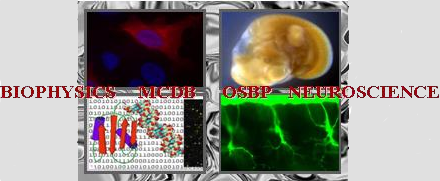Poster abstracts
Poster number 21 submitted by Andrew Reed
Structural characterization of base excision repair processes catalyzed by polymerase β
Andrew J. Reed (OSBP), Rajan Vyas (Chem and Biochem), E John Tokarsky (Biophysics)
Abstract:
8-oxoG is the most common base modification and is generated via oxidation of the C8 position of guanine bases. While 8-oxoG can form a canonical Watson-Crick anti-8-oxoG:anti-dC base-pair, a new hydrogen bonding group on the Hoogsteen face allows for a syn-8-oxoG:anti-dA base-pair. Repair of 8-oxoG requires a minimum of four enzymes beginning with the actions of a glycosylase and endonuclease that generate a single-nucleotide gap flanked by a 3ʹ-OH and an unusual 5ʹ- dRP termini. This is followed by human DNA polymerase Beta (Pol Beta) catalyzed gap-filling DNA synthesis and 5ʹ-dRP removal. Finally, a human ligase seals the DNA backbone to terminate short patch BER. Alternatively, repair of an 8-oxoG:A mispair requires a glycosylase that excises the undamaged adenine. However, this requires Pol Beta to catalyze synthesis opposite 8-oxoG. In addition, if the dRP moiety is inefficiently removed in either instance, long patch BER is triggered wherein Pol Beta catalyzes strand displacement and DNA synthesis to incorporate one or more additional nucleotides followed by DNA processing by several other enzymes to complete DNA repair. Previous structural studies of Pol Beta and 8-oxoG have used substrate analogs that give only static images of pre-catalytic and post-catalytic by-pass of the lesion. We utilize time-resolved X-ray crystallography with natural substrates, to show lesion by-pass and extension in real time. In these structures, both base pairing modes are clearly visible. Surprisingly, a transient third metal is observed in the by-pass and extension reactions, and is hypothesized to aid in transition-state stabilization and product release. Furthermore, we utilize a unique Schiff-base reduction technique to capture Pol Beta in the process of removing a 5′-dRP. These structures provide an in depth examination of all the steps catalyzed by Pol Beta during short and long patch BER of 8-oxoG.
Keywords: DNA Polymerase, Oxidative Damage, X-ray Crystallography
